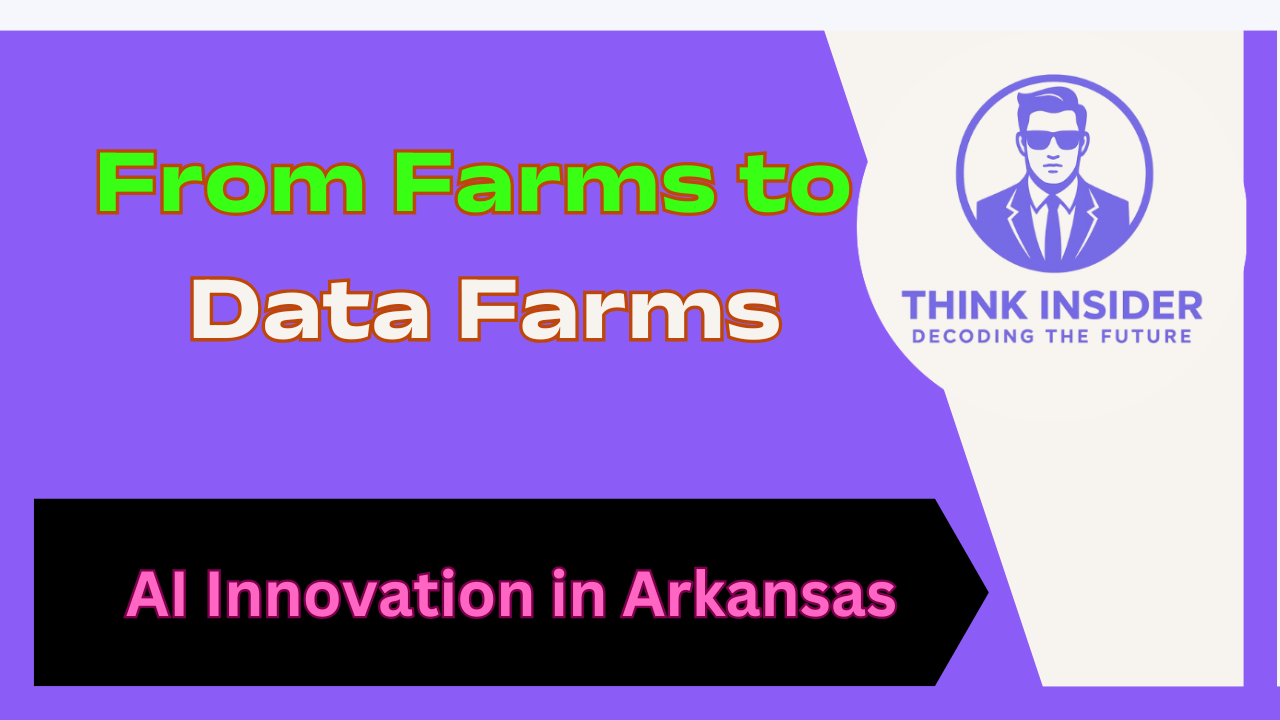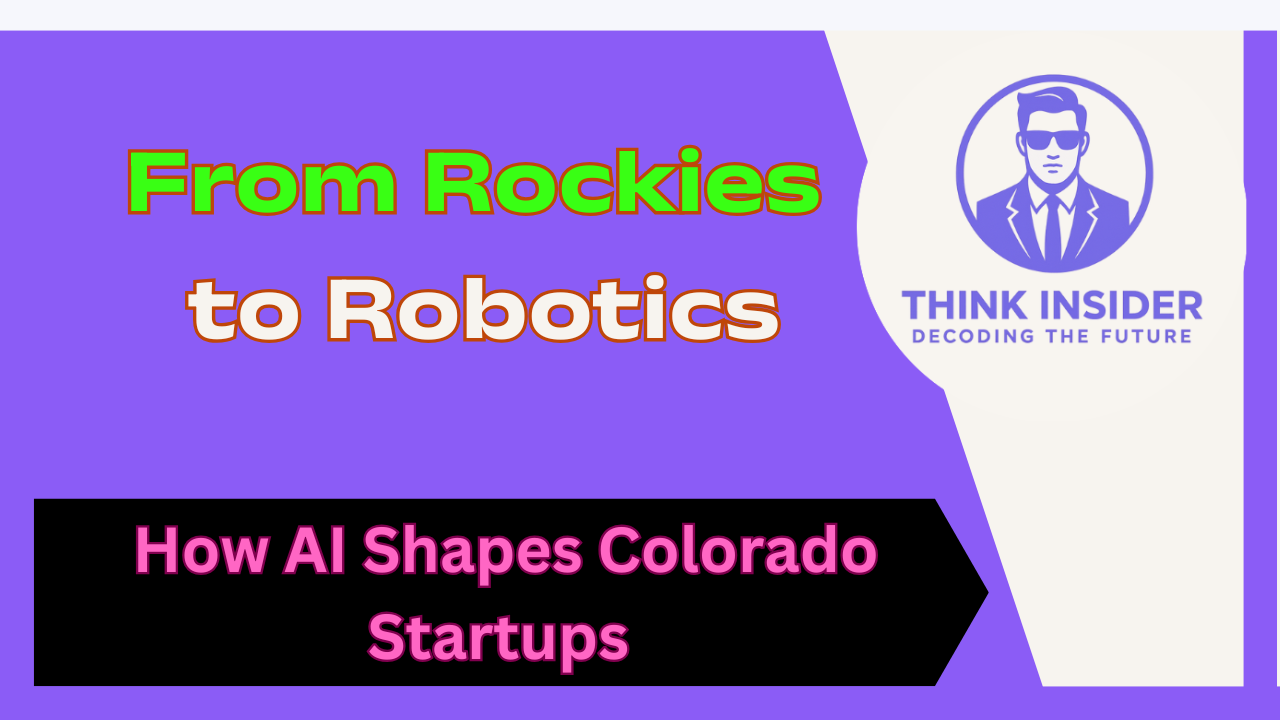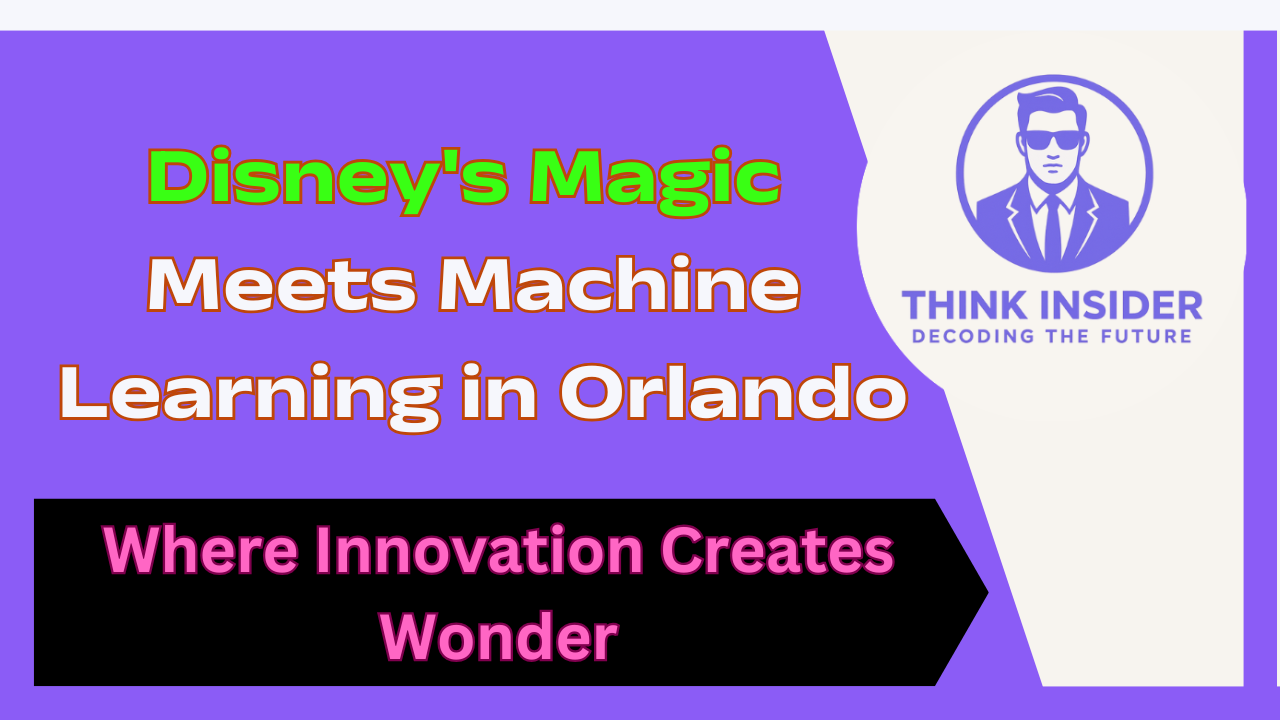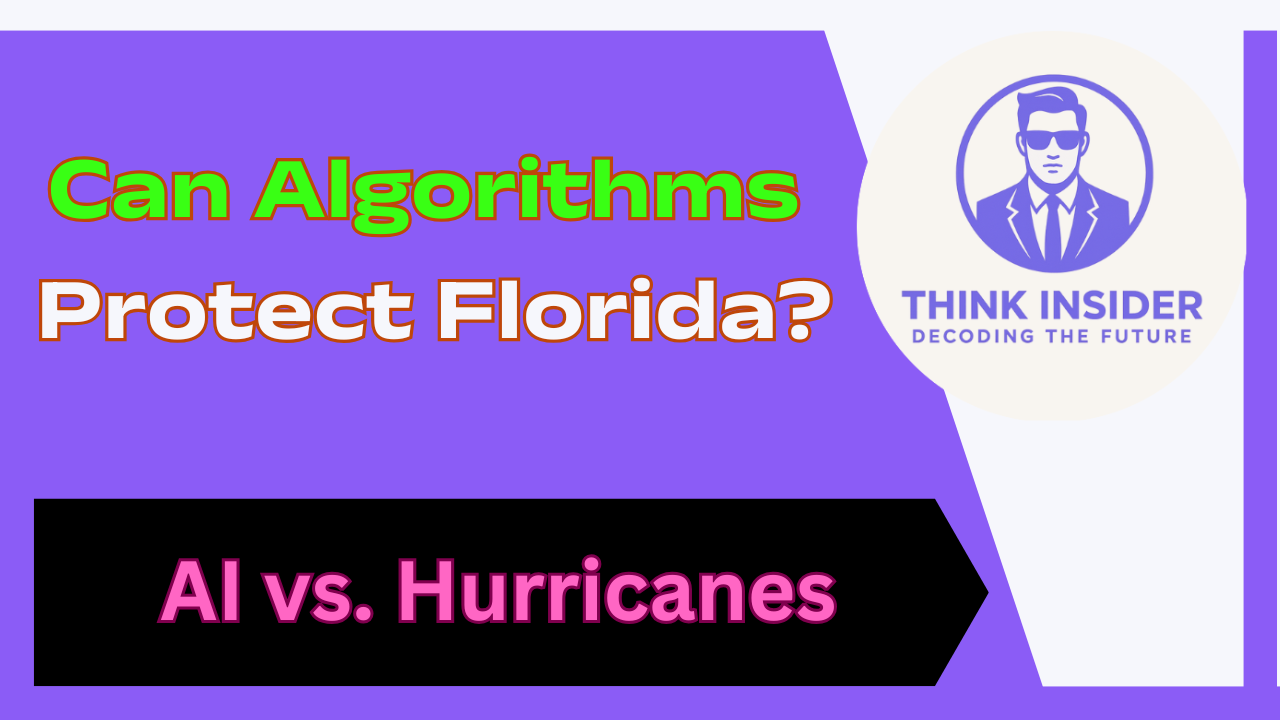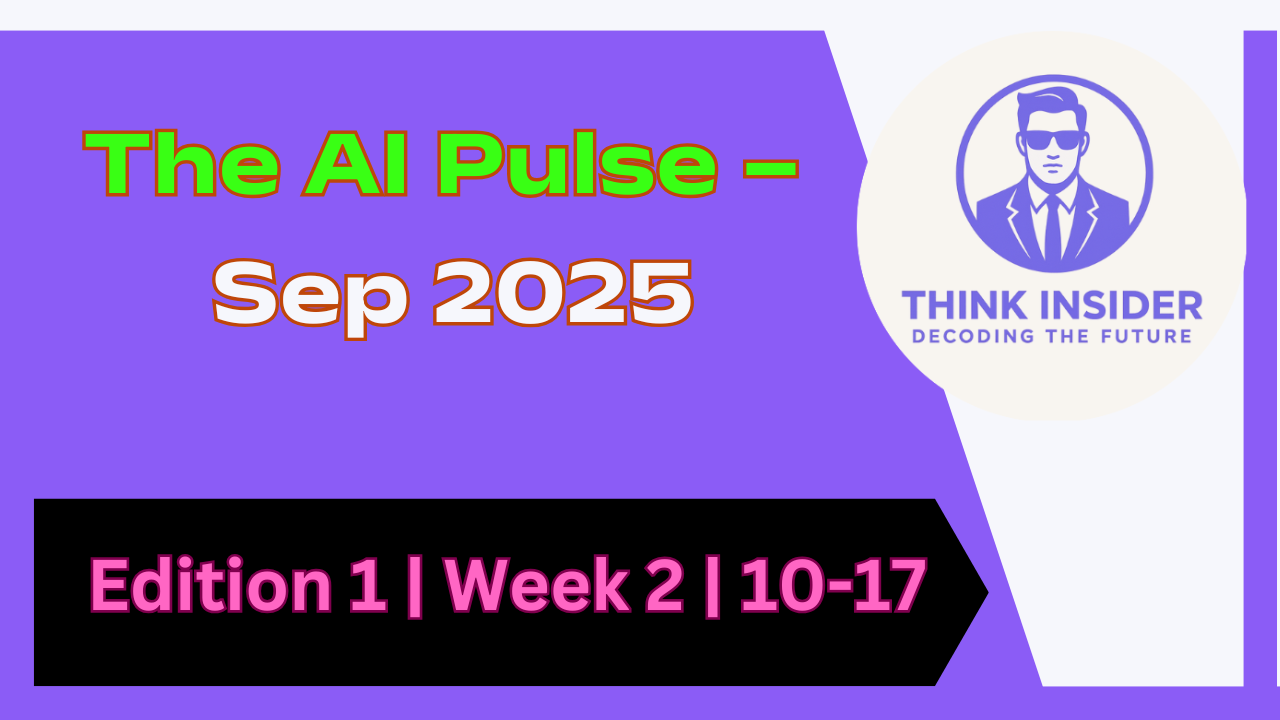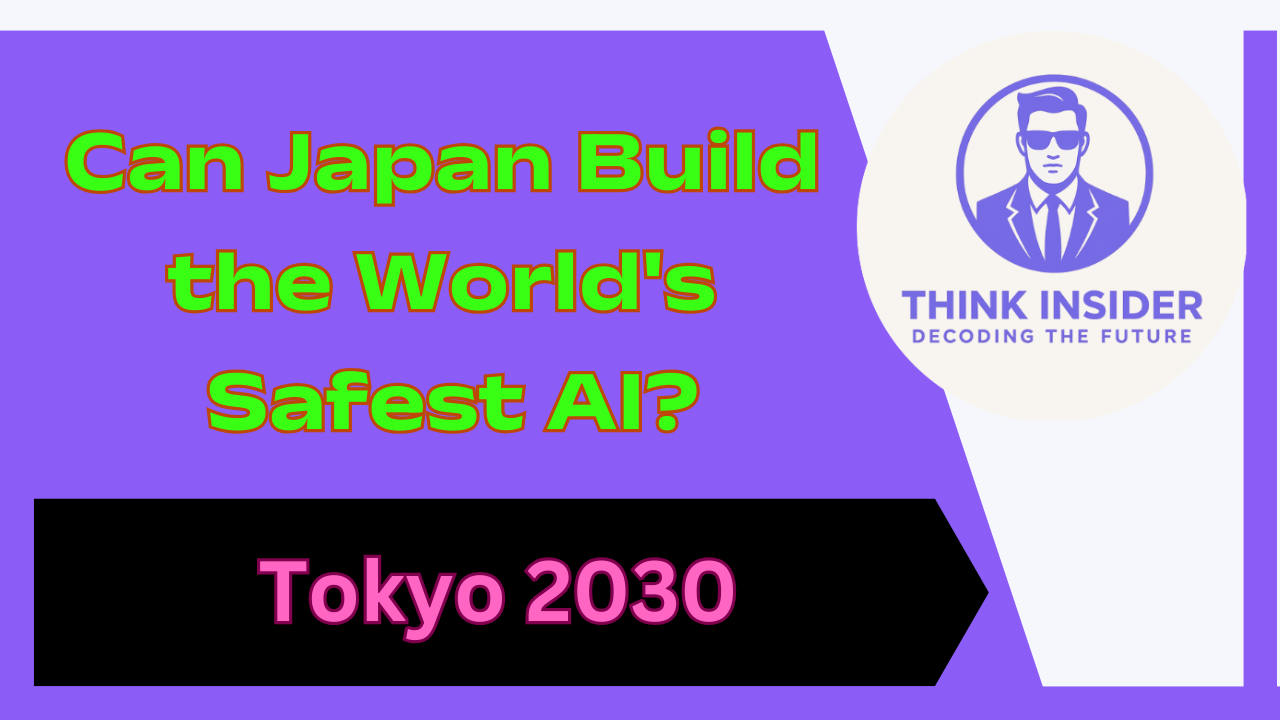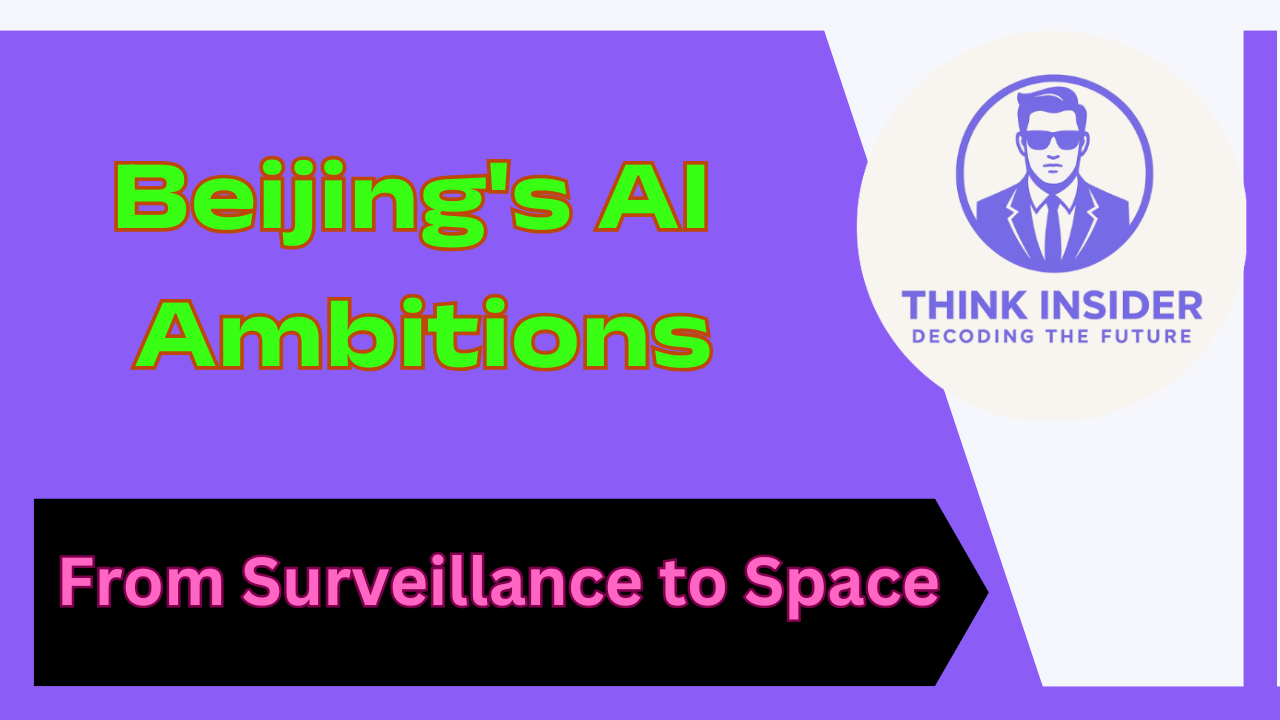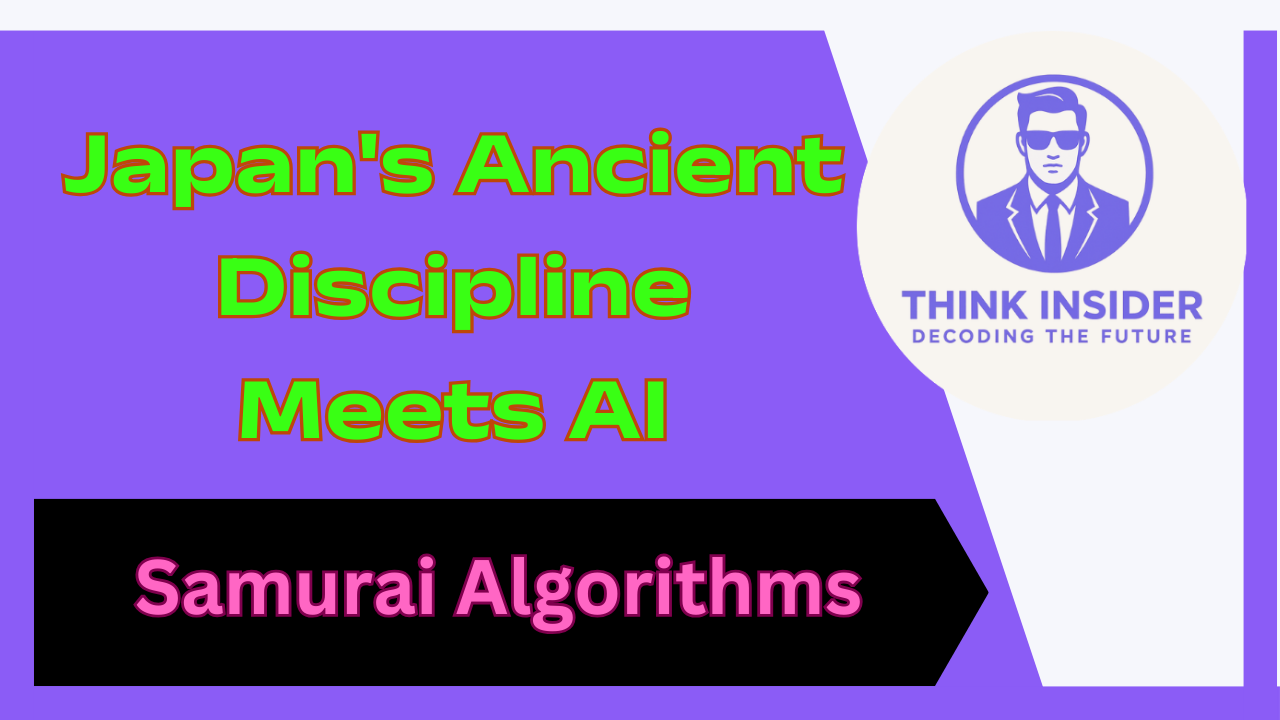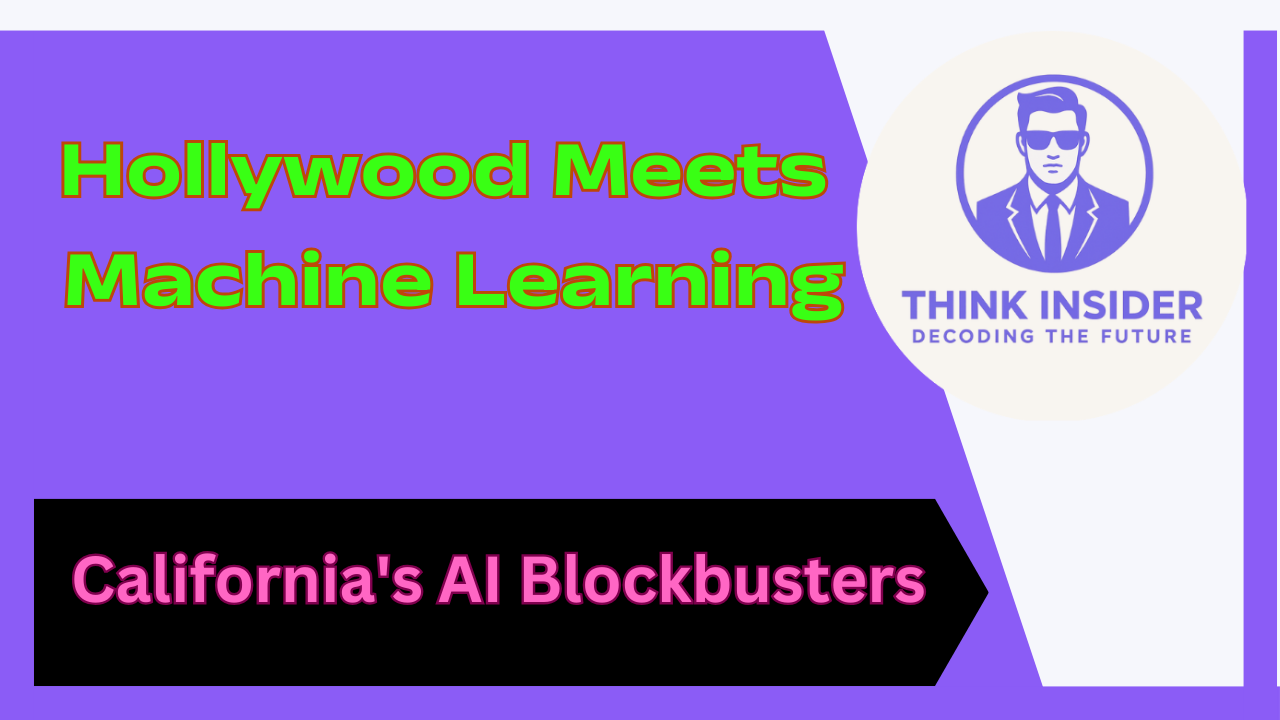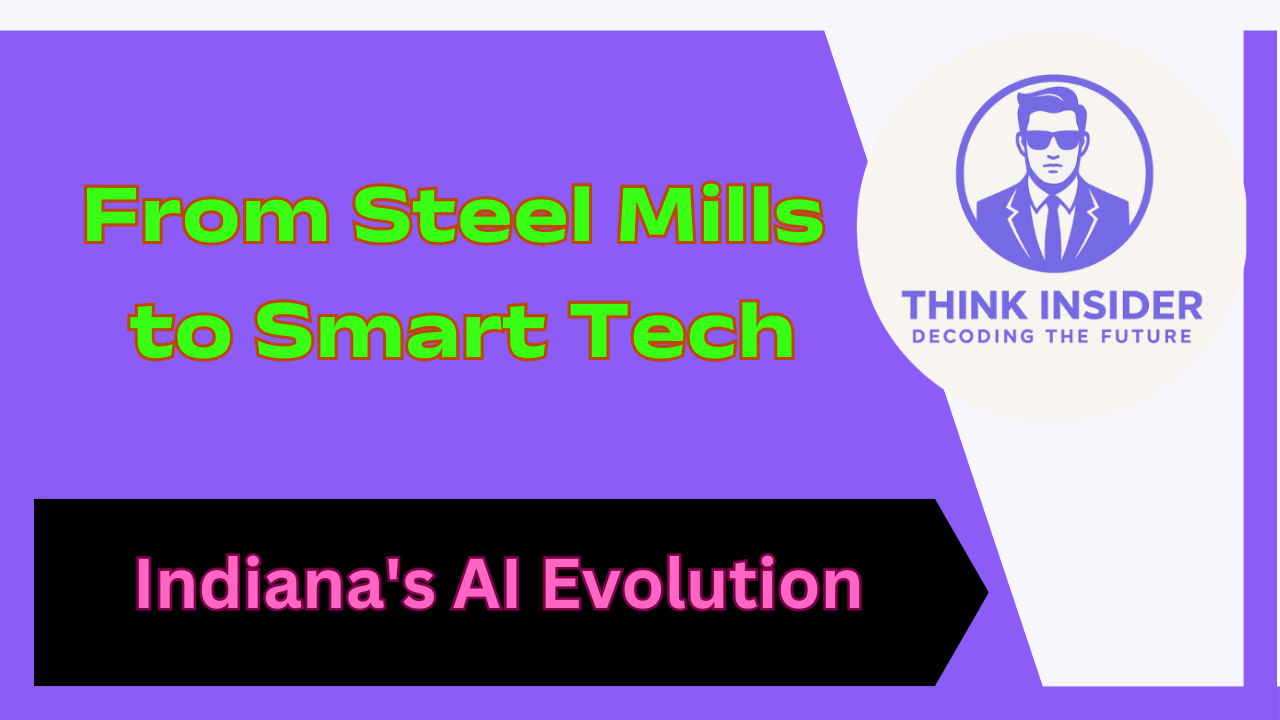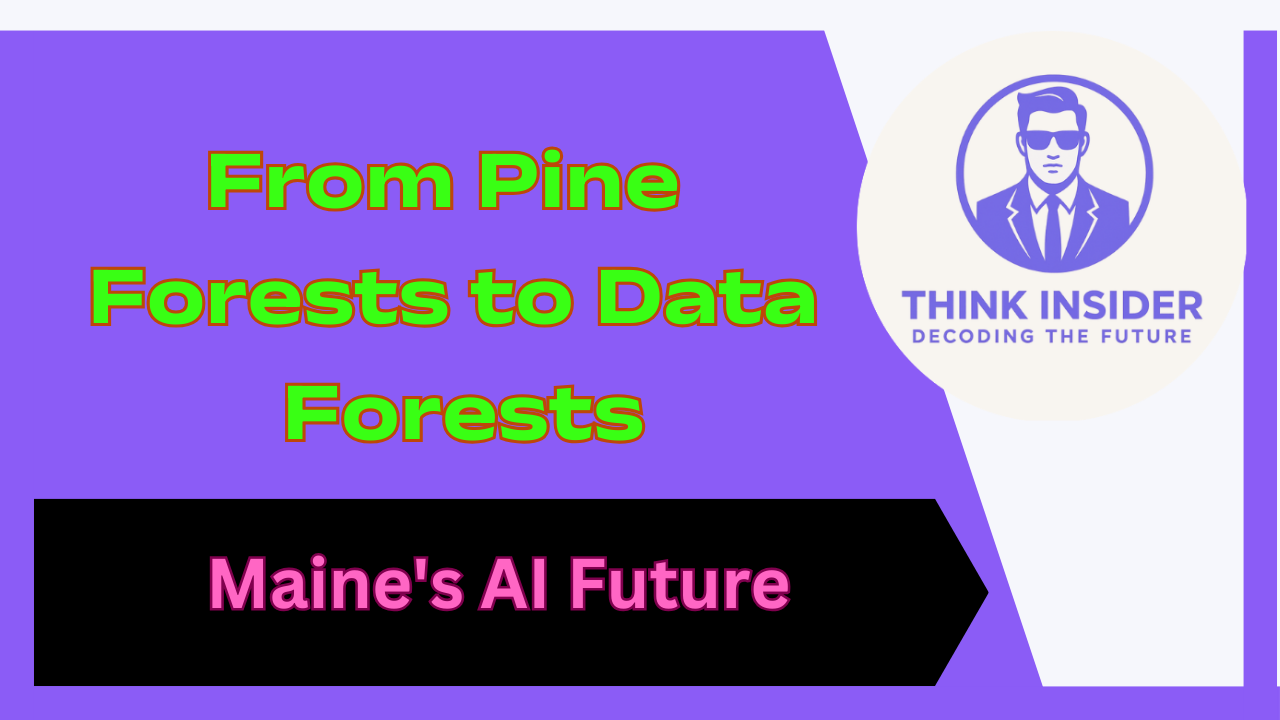Think Insider
Decoding the future
Your ultimate gateway to AI news, breakthroughs & global impact
Unveiling the latest AI disruptions, ethical dilemmas, and the human story driving the intelligence revolution 🤖
AI Intelligence Categories
Comprehensive coverage of AI's impact across all sectors of society
Geopolitics
AI in international relations and global power
🗞️AI Editions
Monthly AI news wrap-up and latest developments
🗞️AI News
Monthly AI news wrap-up and latest developments
🚀AI Startup Review
Uncover funding, innovation & success stories
🔧AI Tools & How-To
Practical guides and AI tool tutorials
🌳AI Branches
ML, Deep Learning, Supervised & Unsupervised
⚖️Society & Ethics
Ethical implications and societal impact of AI
⭐Famous People in AI
Profiles of leaders shaping AI's future
💼Business & Economy
AI's transformative impact on global markets
🛡️Defense & Security
AI applications in cybersecurity and defense
⚛️Quantum Race
Quantum computing and AI convergence
🏠AI in Daily Life
How artificial intelligence transforms everyday experiences
🧘Religion & Philosophy
AI through the lens of spirituality and philosophy
🚀Future Tech Frontiers
Emerging technologies and AI innovations
Enjoying contents on this Website?
Every article I create is a labor of love—crafted with research, insight, and passion. I choose to keep my work ad-free, so your reading experience is never interrupted. But quality content takes time and effort.
Your support is more than just a contribution—it's a vote for independent, meaningful knowledge. It fuels the next story, the next guide, the next big idea that can help thousands of curious minds.
Other ways to support:
❤️ Thank you for keeping this journey ad-free and full of knowledge for everyone.
Artificial Intelligence Revolution
Decoding the Future Across Every Industry and Human Endeavor
By: Nishant Chandravanshi
Sitting in my Delhi office at 3 AM, watching the city sleep while my AI models continued their relentless work, I realized something profound: we're witnessing the most transformative technological revolution since the invention of the internet. The global AI market, valued at $224.41 billion in 2024, is projected to reach an astronomical $1,236.47 billion by 2030 – but these numbers barely scratch the surface of what's really happening.
Every day, I work with data pipelines that process millions of records, Power BI dashboards that reveal hidden patterns, and Azure Synapse systems that would have been science fiction just a decade ago. Yet what strikes me most isn't the technical sophistication – it's how AI has become the invisible thread weaving through every aspect of human civilization.
This isn't just another technology trend. 78% of organizations now use AI in at least one business function, up from 55% just a year earlier. We're experiencing a fundamental shift in how humans create, decide, and interact with the world around us.
The Magnitude of Our Moment: Understanding AI's Unprecedented Scale
When people ask me about AI's impact, I tell them to imagine electricity's introduction multiplied by the internet's connectivity, then accelerated at smartphone adoption speeds. That's where we are today.
2032 Projection: $1,771.62 billion (657% growth)
Annual Growth Rate: 27.67% through 2030
Corporate Adoption: 78% of organizations actively using AI
The scale becomes even more staggering when examining sector-specific transformations. 53% of C-level executives now regularly use generative AI at work, compared to 44% of mid-level managers, indicating leadership-driven adoption across corporate hierarchies.
But raw statistics miss the human story. During a recent project implementing machine learning models for a Mumbai-based healthcare startup, I watched doctors identify diseases 40% faster than traditional methods. That's not just efficiency – that's lives saved, families preserved, hope restored.
Defense & Security: The Digital Battlefield Revolution
Walking through India's defense technology exhibitions, I've witnessed how AI transforms modern warfare from reactive strategies to predictive intelligence systems. The applications span far beyond what most civilians understand.
Autonomous Systems Integration
Modern defense operations deploy AI-powered drones capable of independent decision-making within pre-defined parameters. These systems process real-time battlefield data, identify threats, and execute responses faster than human reflexes allow. Indian defense contractors now integrate machine learning algorithms that adapt to enemy tactics during active operations.
Surveillance Network Intelligence
Traditional security cameras capture footage; AI-enhanced systems understand, predict, and prevent. Current implementations analyze facial recognition data against terrorist databases, detect unusual behavior patterns in crowded spaces, and identify potential security threats before incidents occur.
Cyber Warfare Dynamics
The most sophisticated battles now occur in digital realms. AI systems defend against attacks that evolve in real-time, learning from each attempted breach. Simultaneously, offensive cybersecurity operations employ machine learning to identify vulnerabilities in enemy systems, creating attack vectors that traditional methods couldn't discover.
Defense applications require specialized expertise in areas like computer vision for target identification, natural language processing for intelligence analysis, and predictive modeling for strategic planning. The complexity demands professionals skilled in both traditional security protocols and cutting-edge AI implementation.
Healthcare: Transforming Human Longevity and Wellness
Healthcare represents AI's most emotionally resonant application area. During my collaborations with medical professionals, I've observed how diagnostic accuracy improvements translate directly into patient outcomes.
Diagnostic Revolution
AI-powered imaging systems now detect cancers, fractures, and anomalies with accuracy rates exceeding experienced radiologists in specific domains. Machine learning models trained on millions of medical images identify patterns invisible to human observation, enabling earlier interventions when treatments prove most effective.
Drug Discovery Acceleration
Traditional pharmaceutical development required decades and billions of dollars. AI-driven molecular analysis now predicts drug effectiveness, identifies optimal compounds, and simulates biological interactions within months rather than years. This acceleration promises breakthrough treatments for previously incurable conditions.
Robotic Surgery Precision
Surgical robots guided by AI algorithms perform procedures with steadiness and precision surpassing human capabilities. These systems integrate real-time patient monitoring, predictive modeling for potential complications, and adaptive responses to unexpected surgical developments.
Surgery Complication Reduction: 25-40% with robotic assistance
Drug Discovery Timeline: Reduced from 10-15 years to 3-5 years
Patient Monitoring Efficiency: 24/7 automated vital sign analysis
The personal satisfaction of contributing to healthcare improvements drives many of my technical decisions. When implementing Power BI dashboards for hospital administrators, seeing patient flow optimization reduce wait times by 30% creates meaning beyond mere data visualization.
Law & Legal Technology: Justice Through Algorithmic Analysis
Legal professionals initially resisted AI adoption, viewing technology as incompatible with nuanced legal reasoning. This perspective has fundamentally shifted as AI demonstrates capabilities complementing rather than replacing human judgment.
Contract Analysis Automation
Legal AI systems now review contracts faster and more thoroughly than teams of junior associates. These platforms identify potential risks, suggest modifications, and ensure compliance with regulatory requirements across multiple jurisdictions. The efficiency gains allow lawyers to focus on strategic counsel rather than document review.
Legal Research Enhancement
Traditional legal research required hours searching through case law, statutes, and precedents. AI-powered research tools instantly identify relevant cases, analyze judicial patterns, and predict case outcomes based on historical data. This capability democratizes access to comprehensive legal analysis.
Predictive Case Outcomes
Machine learning models trained on thousands of court decisions now predict case outcomes with remarkable accuracy. These predictions help lawyers develop strategies, advise clients on settlement options, and allocate resources effectively.
| Legal AI Application | Efficiency Gain | Accuracy Improvement | Time Reduction |
|---|---|---|---|
| Contract Review | 75% | 25% | 80% |
| Legal Research | 85% | 40% | 90% |
| Case Outcome Prediction | 60% | 30% | 70% |
| Document Generation | 90% | 15% | 95% |
| Compliance Monitoring | 80% | 50% | 85% |
| Patent Analysis | 70% | 35% | 75% |
The implications extend beyond efficiency. Smaller law firms now access research capabilities previously available only to major corporations, leveling the playing field and improving justice accessibility.
Finance & Banking: Algorithmic Money Management
Financial services embrace AI more aggressively than most industries, driven by competitive pressures and regulatory requirements for risk management improvements.
Fraud Detection Systems
Modern banking fraud detection analyzes transaction patterns in real-time, identifying suspicious activities within milliseconds of occurrence. These systems learn from each transaction, adapting to new fraud techniques faster than traditional rule-based systems.
Algorithmic Trading Operations
High-frequency trading algorithms now execute millions of transactions daily, responding to market changes faster than human traders. These systems analyze news sentiment, social media trends, economic indicators, and historical patterns simultaneously, making split-second investment decisions.
Credit Scoring Evolution
Traditional credit scoring relied on limited financial history. AI-powered models incorporate social media activity, shopping patterns, mobile phone usage, and hundreds of alternative data points to assess creditworthiness more accurately, particularly for individuals lacking traditional credit histories.
Robo-Advisor Services
Automated investment advisors now manage portfolios worth trillions of dollars globally. These platforms rebalance investments, minimize tax implications, and adjust strategies based on market conditions and individual financial goals.
During my experience implementing Azure Synapse analytics for a Delhi-based fintech company, I watched their loan approval times decrease from weeks to minutes while simultaneously reducing default rates by 23%. This transformation illustrates AI's dual benefit: operational efficiency and improved outcomes.
Retail & E-commerce: Personalized Shopping Experiences
E-commerce platforms leverage AI to create shopping experiences that feel almost telepathic in their accuracy. The sophistication behind these systems often surprises even technical professionals.
Recommendation Engine Intelligence
Modern recommendation systems analyze purchase history, browsing patterns, seasonal trends, social influences, and demographic data to predict consumer preferences with uncanny accuracy. These algorithms drive 35% of Amazon's revenue and similar percentages across major e-commerce platforms.
Inventory Optimization Logic
AI-powered inventory management predicts demand fluctuations, optimizes stock levels, and minimizes storage costs while preventing stockouts. These systems account for weather patterns, local events, social media trends, and economic indicators when making inventory decisions.
Customer Service Automation
Chatbots and virtual assistants now handle 80% of routine customer inquiries, providing instant responses while escalating complex issues to human representatives. Natural language processing capabilities enable these systems to understand context, emotion, and intent behind customer communications.
Dynamic Pricing Strategies
Retail prices now adjust in real-time based on demand, competition, inventory levels, and customer behavior. Airlines pioneered this approach, but now even grocery stores implement dynamic pricing to maximize revenue while maintaining customer satisfaction.
The personalization extends beyond recommendations. During a recent project with an Indian fashion retailer, we implemented computer vision systems that suggest outfits based on weather forecasts, local events, and individual style preferences. Sales increased 40% within six months.
Education: Adaptive Learning Revolution
Educational AI represents perhaps the most democratizing application of artificial intelligence, potentially providing personalized tutoring to every student regardless of economic background.
Adaptive Learning Platforms
Modern educational software adjusts difficulty levels, teaching methods, and content presentation based on individual learning patterns. These systems identify knowledge gaps, reinforce weak areas, and accelerate instruction in subjects where students excel.
Automated Grading Systems
AI grading extends beyond multiple-choice questions to evaluate essays, coding assignments, and complex problem-solving tasks. These systems provide immediate feedback, enabling students to iterate and improve rapidly.
Personalized Tutoring
Virtual tutors available 24/7 provide individualized instruction, answer questions, and offer encouragement. These systems adapt to different learning styles, cultural contexts, and individual pace preferences.
Administrative Optimization
Educational institutions use AI for scheduling optimization, resource allocation, and student performance prediction. These applications help administrators make data-driven decisions about curriculum development and support services.
Teacher Time Savings: 40% through automated grading
Student Engagement: 60% increase with personalized content
Administrative Efficiency: 35% improvement in resource allocation
Working with educational technology startups in Bangalore, I've seen how AI tutoring systems help students in rural areas access the same quality instruction available in premium urban schools. This democratization potential motivates continued innovation in educational AI applications.
Transportation: Autonomous Movement Revolution
Transportation AI extends far beyond self-driving cars, encompassing entire logistics networks, traffic management systems, and mobility optimization platforms.
Autonomous Vehicle Development
Self-driving vehicles integrate computer vision, sensor fusion, predictive modeling, and real-time decision-making systems. These technologies promise to eliminate human error responsible for 94% of serious traffic crashes.
Traffic Prediction Algorithms
Smart traffic management systems analyze historical patterns, real-time conditions, weather data, and event schedules to optimize traffic flow. These systems reduce congestion, minimize emissions, and improve urban mobility.
Logistics Optimization Networks
Global shipping companies use AI to optimize delivery routes, predict delays, and manage inventory across distribution networks. These systems consider fuel costs, weather conditions, regulatory requirements, and customer preferences when planning logistics operations.
Public Transportation Intelligence
Public transit systems optimize schedules, predict maintenance needs, and manage passenger flow using AI analytics. These applications improve reliability while reducing operational costs.
The integration complexity requires expertise in multiple domains: computer vision for obstacle detection, predictive analytics for route optimization, and real-time processing for safety systems. Each component must function reliably in diverse environmental conditions.
The Path Forward: Embracing Our AI-Enabled Future
Standing at this technological inflection point, we face choices that will define human civilization for generations. The AI revolution isn't merely about machines becoming smarter – it's about humans becoming more capable, more creative, and more connected to solving our greatest challenges.
During my years working with AI systems across industries, I've witnessed transformations that seemed impossible just a decade ago. Farmers in rural India use satellite AI to optimize crop yields, doctors in tier-2 cities detect diseases with accuracy rivaling top specialists, and small businesses compete globally using AI-powered insights previously available only to Fortune 500 companies.
The statistics tell part of the story: $1.77 trillion market by 2032, 78% corporate adoption rates, 95% accuracy improvements across applications. But the human story reveals AI's true potential – democratizing expertise, amplifying human capabilities, and creating opportunities for individuals and organizations willing to embrace this transformation.
The Acceleration Continues
AI development follows exponential rather than linear progression. What takes years today will take months tomorrow, and what seems impossible today becomes routine within a decade. Organizations and individuals who understand this acceleration curve position themselves for unprecedented opportunities.
The convergence of AI with other emerging technologies – quantum computing, biotechnology, renewable energy, space exploration – promises breakthroughs we can barely imagine. Yet the foundation for participating in this future requires action today: building AI literacy, developing relevant skills, and creating organizational capabilities for continuous adaptation.
Your Role in the AI Revolution
Every professional, regardless of industry or role, will work alongside AI systems within the next five years. This collaboration requires new skills, new mindsets, and new approaches to problem-solving. The choice isn't whether to engage with AI – it's how quickly and effectively you can integrate AI capabilities into your personal and professional toolkit.
For organizations, AI adoption represents both opportunity and imperative. Companies that successfully implement AI gain competitive advantages that compound over time. Those that delay face increasing difficulties competing against AI-enhanced competitors.
A Call to Thoughtful Action
As we navigate this transformation, we must balance innovation with responsibility, efficiency with equity, and progress with preservation of human values. AI's power to transform society comes with corresponding obligations to ensure these transformations serve human flourishing.
The future arrives not as destiny but as the result of choices we make today. Choose to learn, choose to adapt, choose to lead, and choose to ensure that AI development serves the broadest possible human benefit.
The revolution has begun. Your participation determines not only your success but contributes to shaping how artificial intelligence transforms human civilization. The future belongs to those who decode it first and act on that understanding with wisdom, courage, and purpose.
Continue your AI journey with Think Insider – where we decode the future, one breakthrough at a time.
Frequently Asked Questions
Nishant Chandravanshi is a data analytics expert specializing in Power BI, Azure Synapse, Microsoft Fabric, and AI implementation across enterprise environments. His work spans multiple industries, helping organizations leverage artificial intelligence for competitive advantage while maintaining ethical and responsible development practices.


